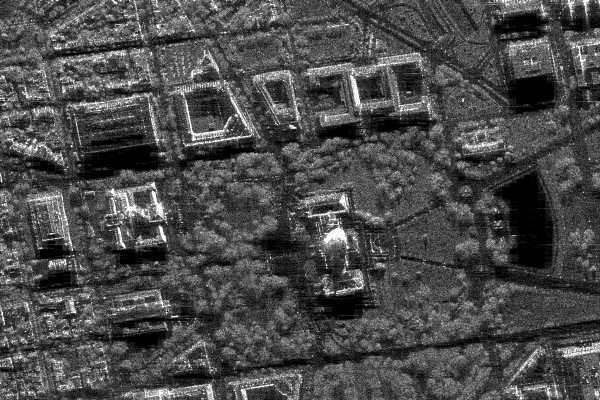SAR Image Processing
Synthetic Aperture Radar (SAR) is used to obtain high-resolution
images from broad areas of terrain.
SAR is capable of operating under inclement weather
conditions, day or night.
Processing of SAR data is required
to extract relevant features, such as objects or buildings.
Detection of such objects is based on the detection of locally
bright pixels, followed by clustering of neighborhoods of pixels.
We are working on several aspects of SAR image processing
in the
Video and Image Processing La
boratory (VIPER)
to improve
the computational performance of the detection and identification
of targets. A sample of our work is shown below using an image
we obtained from
Sandia National Laboratories.

U.S. Capitol and Library of Congress, Washington, D.C.
(SAR image obtained from
Sandia National Laboratories.)
The initial detection is performed with a contrast-based statistic,
in particular a CFAR (constant false-alarm-rate) detector. This locates
potential targets in clutter by searching for locally bright returns
in the SAR signal.

Detection of locally bright pixels
Once a list of detections is obtained, aggregation is performed to group
together all detections belonging to a given object. The clustering
is based on the spatial distribution of detections; detected pixels
are grouped into a cluster if they are within a target-sized neighborhood
of each other.
The colors indicate membership in a cluster class.

Clustering Results
Address all comments and questions to
Professor
Edward J. Delp.
Professor Edward J. Delp



